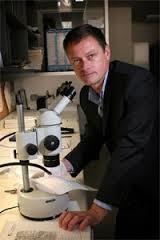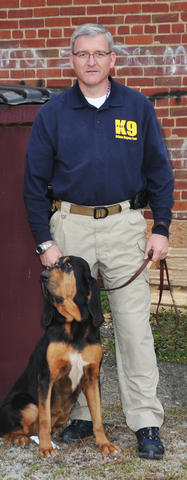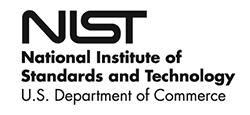OSAC Newsletter, November 2016

November 2016
SAVE THE DATE: OSAC Scientific Area Committee Public Status Reports & Open Discussion Events @ AAFS | In Remembrance of OSAC Affiliates and Members | Status of Standards Documents Recommended for Inclusion in the OSAC Registries | Standards Developing Organization (SDO) News | OSAC Vacancies | On the Horizon | NIST Activities
SAVE THE DATE: OSAC Scientific Area Committee Public Status Reports & Open Discussion Events @ AAFS
NIST's Organization of Scientific Area Committees (OSAC) will hold Public Status Reports & Open Discussion Sessions on Monday and Tuesday, Feb. 13-14, 2017 during the American Academy of Forensic Science 69th Annual Scientific Meeting in New Orleans, Louisiana. The events will include presentations and discussions of progress and priorities for developing forensic science standards and guidelines for each of twenty-five OSAC subcommittees.
In December, OSAC will open registration via announcement in the newsletter for this free on-site event or live WEBCAST. NIST OSAC Affairs has partnered with the National Institute of Justice's Forensic Technology Center of Excellence, operated by RTI International, to manage the registration process and broadcast the webcast to all interested stakeholders. Stay tuned for more information: The draft agenda is listed below:
February 13, 2017 (Monday)
OSAC Digital/Multimedia Scientific Area Committee Public Status Reports & Open Discussion
(8:00 AM – 10:00 AM)
• SAC Introduction
• Digital Evidence Subcommittee presentation/discussion
• Facial Identification Subcommittee presentation/discussion
• Video/Imaging Technology and Analysis Subcommittee presentation/discussion
• Speaker Recognition Subcommittee presentation/discussion
Biology/DNA Scientific Area Committee Public Status Reports & Open Discussion
(10:15 AM – 12:00 PM)
• SAC Introduction
• Biological Methods Subcommittee presentation/discussion
• Biological Data Interpretation and Reporting Subcommittee presentation/discussion
• Wildlife Forensics Subcommittee presentation/discussion
Crime Scene/Death Investigation Scientific Area Committee Public Status Reports & Open Discussion
(1:00 PM – 5:00 PM)
• SAC Introduction
• Anthropology Subcommittee presentation/discussion
• Crime Scene Investigation Subcommittee presentation/discussion
• Disaster Victim Identification Subcommittee presentation/discussion
• Dogs and Sensors Subcommittee presentation/discussion
• BREAK (30 minutes)
• Fire and Explosion Investigation Subcommittee presentation/discussion
• Medicolegal Death Investigation Subcommittee presentation/discussion
• Odontology Subcommittee presentation/discussion
February 14, 2017 (Tuesday)
Physics/Pattern Interpretation Scientific Area Committee Public Status Reports & Open Discussion
(8:30 AM – 12:00 PM)
• SAC Introduction
• Bloodstain Pattern Analysis Subcommittee presentation/discussion
• Firearms and Toolmarks Subcommittee presentation/discussion
• Footwear and Tire Subcommittee presentation/discussion
• BREAK (30 minutes)
• Forensic Document Examination Subcommittee presentation/discussion
• Friction Ridge Subcommittee presentation/discussion
Chemistry/Instrumental Analysis Scientific Area Committee Public Status Reports & Open Discussion
(1:00 PM – 5:00 PM)
• SAC Introduction
• Fire Debris and Explosives Subcommittee presentation/discussion
• Geological Materials Subcommittee presentation/discussion
• Gunshot Residue Subcommittee presentation/discussion
• BREAK (30 minutes)
• Materials (Trace) Subcommittee presentation/discussion
• Seized Drugs Subcommittee presentation/discussion
• Toxicology Subcommittee presentation/discussion
In Remembrance of OSAC Members and Affiliates
Dr. Bryan James Found and Rex Stockholm were active international affiliate contributors and members of the Organization of Scientific Area Committees for Forensic Science (OSAC) program. These articles were provided by the OSAC subcommittees who worked closely with them.
Dr. Bryan James Found

On October 23, 2016, science lost an international leader in the field of forensic signature and handwriting comparison and identification. Dr. Bryan James Found passed away suddenly at his Australian home. Bryan had been involved in numerous working groups including the OSAC Forensic Document Examination Subcommittee and the NIST-sponsored Human Factors in Handwriting Examination Project.
Bryan began his career in DNA, but switched to questioned documents, which he found more fascinating. It was indeed fortunate for the questioned document examination field that he made that decision some 28 years ago. He held degrees as a Bachelor of Science, Graduate Degrees in Education and Neurosciences, and a Doctorate in Philosophy. Bryan was the Chief Forensic Scientist with the Victoria Police Forensic Services Department at the time of his unexpected passing.
Bryan was ahead of his time, conducting research which was sometimes controversial, but never lacking in the quest to better the document examination field. Bryan was widely known for his research work with Doug Rogers at La Trobe University in which the pair co-authored a significant body of work that would ultimately become useful in Daubert hearings and advance the validation of forensic document examination.
Bryan’s accolades are many. His work on handwriting issues and cognitive factors made him a sought after lecturer. During his career he spoke in some 20 countries that spanned the continents of Europe, Asia, Africa, North America and South America. The American Society of Questioned Document Examiners recognized Bryan’s work with the 2016 Linton Godown Award for Research, awarded for the production of a body of research benefiting the field or innovation creating valid techniques or instrumentation.
Bryan was recently honored as the recipient of the Life Member Award from the Australian and New Zealand Forensic Science Society. It is a testament to his legacy in the exhibition of shock and sadness expressed by examiners from many parts of the world, many of whom he had never met, but were exposed to his knowledge.
His love for teaching brought him to many positions. Bryan held appointments as Adjunct Professor in the Program in Expertise, Evidence and Law, Faculty of Law, University of South Wales, Adjunct Professor with the La Trobe Law School College of Arts, Social Sciences and Commerce, and Adjunct Professor at the School of Psychology and Public Health, College of Science, Health and Engineering at La Trobe University.
The forensic institute in Melbourne will be named in his honor and a special grant set up to support young forensic scientists.
At meetings and conferences, Bryan is remembered as being found tucked away in discussions on handwriting and signature philosophies and examination procedures. Those who were fortunate to work with him were exposed to his intellect, humor, charisma, and as an individual dedicated to his profession. He is survived by his parents, his brother, his partner, and the rest of his family. His contributions to the OSAC will be missed.
Rex Stockham

Rex Aaron Stockham, 53, a Supervisory Special Agent in the Laboratory Division of the Federal Bureau of Investigation, passed away on Saturday, October 8, 2016, after an 18-month battle with cancer. Rex graduated in 1984 with a degree in Chemistry from West Liberty State College in West Virginia and earned a Master’s Degree in Forensic Science from George Washington University, and was an active member of the OSAC Dogs and Sensors Subcommittee where he was an active contributor for developing training and certification standards for numerous disciplines of detector canines.
Rex began his FBI career in 1984 as a Mail Clerk and was promoted to a Technician in the Laboratory Division’s Explosives Unit. He entered New Agents’ Class in May 1988, and upon graduation, was transferred to the Houston Division, where he investigated Violent Crimes. In 1988, he transferred back to the Laboratory Division as an Explosives Examiner in the Explosives Unit. In 2005, he transferred to the Laboratory Division’s Evidence Response Team Unit and was most recently assigned to the Laboratory Division’s Terrorist Explosive Device Analytical Center. He was a Board member of the Scientific Working Group on Dog and Orthogonal Detection Guidelines (SWGDOG), and had peer reviewed scientific articles published in Forensic Science Communication and Forensic Science International.
Rex worked numerous high profile cases, including the Alfred P. Murrah Federal Building Bombing in Oklahoma City; Shanksville, Pennsylvania; Amerithrax; the Pentagon and DC Sniper cases; the Boston Bombing, numerous international bombing investigations, and the Jessica Ridgeway, Gabrielle Swainson, and Holly Bobo child abduction and murder investigations.
Rex believed his greatest accomplishment with the Bureau was the work he and his team did in developing the FBI’s Forensic Canine Program, one of the only scientifically backed canine law enforcement programs in the world. He was responsible for creating one of the only researched-based programs used with forensic canines to help augment investigations. He pioneered new techniques and practices for the use of human scent evidence and victim recovery canines in investigations. These techniques and practices are still in use today.
His impact on the advancement of canine training philosophies has assisted numerous law enforcement agencies in canine casework successes. He often partnered with the Behavioral Analysis Unit, Cellular Analysis Survey Team, and Child Abduction Rapid Deployment Team to develop comprehensive search strategies.
Rex was recognized as a subject matter expert for canine testimony and successfully withstood a Daubert challenge for human scent evidence in the United States 9th Circuit.
Rex was an active parishioner in his church. His hobbies included building street rods, politics, but most especially spending time with his family. He is survived by his wife, three sons, two daughters, mother, sister, brother-in-law, niece, and nephew. At Rex’s request, memorial donations may be made to the Kody Snodgrass Memorial Foundation, Inc., 5162 S. Manatee Terrace, Homosassa, FL 34446. This organization’s mission is to train and provide bloodhounds to law enforcement agencies throughout the country for use in the search for missing children.
Status of Standards Documents Recommended for Inclusion on the OSAC Registries
Want to know the status of standards documents that are under consideration for the OSAC Registries? Please visit the Status of Standards Documents OSAC webpage.
The aim of the Organization of Scientific Area Committees for Forensic Science (OSAC) is to identify and promote technically sound, consensus-based, fit-for-purpose documentary standards that are based on sound scientific principles. This will be achieved through the OSAC Registry of Approved Standards and the OSAC Registry of Approved Guidelines. A standard or guideline that is posted on either Registry demonstrates that the methods it contains have been assessed to be valid by forensic practitioners, academic researchers, measurement scientists, and statisticians through a consensus development process that allows participation and comment from all relevant stakeholders.
Below is a listing of standards or guidelines that are under consideration for the OSAC Registries, along with their status in the approval process.
Standards Documents Open for Public Comment
The intent of the public comment period is to collect public opinion on inclusion of the standard to the OSAC Registry (OSAC is not soliciting potential revisions to the documents themselves.)
There is nothing available for Public Comment at this time.
Standards Documents in Public Comment Adjudication Phase
Public comment period is closed for the following standards/guidelines as OSAC units review and adjudicate comments received.
ASTM E2388-11 Standard Guide for Minimum Training Requirements for Forensic Document Examiners (for consideration as an OSAC standard)
This guide may not cover all aspects of training for the topics addressed or for unusual or uncommon examinations.
ISO/IEC 17020:2012 Requirements for the Operation of Various Types of Bodies Performing Inspection (for consideration as an OSAC Standard)
ISO/IEC 17020:2012 specifies requirements for the competence of bodies performing inspection and for the impartiality and consistency of their inspection activities.
It applies to inspection bodies of type A, B or C, as defined in ISO/IEC 17020:2012, and it applies to any stage of inspection.
ASTM E2451-13 Standard Practice for Preserving Ignitable Liquids and Ignitable Liquid Residue Extracts from Fire Debris Samples (for consideration as an OSAC Guideline)
This practice describes procedures for preserving residues of ignitable liquids in extracts obtained from fire debris samples and questioned ignitable liquid samples.
Standards Documents at SAC for Vote
There are currently no items at the SAC for Vote.
Standards Documents at FSSB for Vote
ASTM E2330-12 Standard Test Method for Determination of Concentrations of Elements in Glass Samples Using Inductively Coupled Plasma Mass Spectrometry (ICP-MS) for Forensic Comparisons (for consideration as an OSAC Standard)
One objective of a forensic glass examination is to compare glass samples to determine if they can be discriminated using their physical, optical or chemical properties (for example, color, refractive index (RI), density, elemental composition). If the samples are distinguishable in any of these observed and measured properties, it may be concluded that they did not originate from the same source of broken glass. If the samples are indistinguishable in all of these observed and measured properties, the possibility that they originated from the same source of glass cannot be eliminated. The use of an elemental analysis method such as inductively coupled plasma mass spectrometry yields high discrimination among sources of glass. This test method covers a procedure for quantitative determination of the concentrations of magnesium (Mg), aluminum (Al), iron (Fe), titanium (Ti), manganese (Mn), rubidium (Rb), strontium (Sr), zirconium (Zr), barium (Ba), lanthanum (La), cerium (Ce), neodymium (Nd), samarium (Sm), and lead (Pb) in glass samples.
ASTM E2926-13 Standard Test Method for Forensic Comparison of Glass Using Micro X-ray Fluorescence (μ-XRF) Spectrometry (for consideration as an OSAC Standard)
This test method is for the determination of major, minor, and trace elements present in glass fragments. The elemental composition of a glass fragment can be measured through the use of μ-XRF analysis for comparisons of glass. This test method covers the application of μ-XRF using mono- and poly- capillary optics, and an energy dispersive X-ray detector (EDS).
NFPA 1033: Standard for Professional Qualifications for Fire Investigator, 2014 Edition (for consideration as an OSAC Standard)
This standard facilitates safe, accurate investigations by specifying the job performance requirements (JPRs) necessary to perform as a fire investigator in both the private and public sectors.
Standards Documents in the Appeals Phase
The public appeals phase is open for the following standard. Appeals may only be submitted by individuals or groups that submitted a comment during the open public comment phase that believe their comment was not properly adjudicated. Submitted appeals must relate to the comment adjudication process, not technical issues.
ASTM E2548-11e1 Standard Guide for Sampling Seized Drugs for Qualitative and Quantitative Analysis (for consideration as an OSAC Standard)
This guide covers minimum considerations for sampling of seized drugs for qualitative and quantitative analysis.
Standards Documents Returned to SDO for Modifications Based on Comments
After careful consideration of the comments from the either the public and/or other OSAC committees, the OSAC has elected to submit the following documents to the SDO for revisions prior to proceeding through the OSAC process. They believe the issues raised during the comment period can be addressed by the SDO, and intend to bring the updated standards back through the OSAC Registry Approval Process.
ASTM E2881-13e1 Standard Test Method for Extraction and Derivatization of Vegetable Oils and Fats from Fire Debris and Liquid Samples with Analysis by Gas Chromatography-Mass Spectrometry (for consideration as an OSAC Standard)
This test method covers the extraction, derivatization, and identification of fatty acids indicative of vegetable oils and fats in fire debris and liquid samples. This procedure will also extract animal oils and fats, as these are similar in chemical composition to vegetable oils and fats. Herein, the phrase "oils and fats" will be used to refer to both animal and vegetable derived oils and fats. This test method is suitable for successfully extracting oil and fat residues having 8 to 24 carbon atoms.
ASTM E2916-13 Standard Terminology for Digital and Multimedia Evidence Examination (for consideration as an OSAC Guideline)
This document provides standard terminology for the subcommittees of Digital Evidence, Facial Identification, and Video Imaging Technology and Analysis.
ASTM E2825-12 Standard Guide for Forensic Digital Image Processing (for consideration as an OSAC Standard)
This document provides digital image processing guidelines to ensure the production of quality forensic imagery for use as evidence in a court of law. It briefly describes advantages, disadvantages, and potential limitations of each major digital imaging process.
ASTM E1610-14 Standard Guide for Forensic Paint Analysis and Comparison (for consideration as an OSAC Guideline)
This guide is designed to assist the forensic paint examiner in selecting and organizing an analytical scheme for identifying and comparing paints and coatings. The size and condition of the sample(s) will influence the selected analytical scheme.
ASTM E2937-13 Standard Guide for Using Infrared Spectroscopy in Forensic Paint Examinations (for consideration as an OSAC Guideline)
This guide applies to the forensic IR analysis of paints and coatings and is intended to supplement information presented in the Forensic Paint Analysis and Comparison Guidelines written by Scientific Working Group on Materials Analysis (SWGMAT). This guideline is limited to the discussion of Fourier Transform Infrared (FTIR) instruments and provides information on FTIR instrument setup, performance assessment, sample preparation, analysis and data interpretation.
Standards Developing Organization (SDO) News
This section describes SDO activities relevant to the OSAC and forensic science community.
The American Academy of Forensic Science (AAFS) American Standards Board (ASB) has announced the preliminary development stage of a new document*:
BSR/ASB Std 011-201x, Scope of Expertise in Forensic Document Examination (new standard)
This document will describe the responsibilities and qualifications of individuals engaged in the practice of forensic document examination. This document can provide guidance to anyone encountering matters involving forensic document examination.
The OSAC Forensic Document Examination Subcommittee has been a contributor to this standard. For the formal notification of the standards projects initiated by ASB, see ANSI Standards Action, October 28, 2016, Page 14.
[*The submittal of a Project Initiation Notification System (PINS) is required by ANSI for the development, revision, reaffirmation or withdrawal candidate American National Standards (ANS). These notices are published in ANSI Standards Action. The notice is intended to serve as is an opportunity for deliberation among stakeholders and the opportunity to lodge a claim if there is a concern of conflict or duplication.]
There are vacancies on the Human Factors Committee. To apply, complete the OSAC Application Form.
This section describes public and internal OSAC meetings that are on the horizon.
• (Internal OSAC Meeting) FSSB, Dec. 1-2, 2016 in Atlanta, GA.
• (Open to the Public) OSAC Scientific Area Committees Public Status Reports & Open Discussions occur at the American Academy of Forensic Sciences (AAFS) in New Orleans, LA on Feb. 13-14, 2017. (Save the Date)
• (Internal OSAC Meeting) Full OSAC Meeting, April 18-21, 2017 tentatively in Leesburg, VA.
NIST Activities

This section details other activities at NIST that may be of interest to OSAC stakeholders.
Trace Evidence Databases: A Force Multiplier for Forensic Investigators
A window is broken. A home is burglarized. Investigators identify a suspect and find a sliver of what appears to be glass embedded in his shoe. In the forensic science lab, examiners determine, using advanced microscopy and chemical analysis, that the characteristics of that sliver match those of the broken glass in the burgled home.
Pretty strong evidence, right?
Not so fast, says Shannan Williams, who manages the trace evidence research program at the National Institute of Standards and Technology (NIST).
Read more about how NIST is involved in Trace Evidence Databases.

